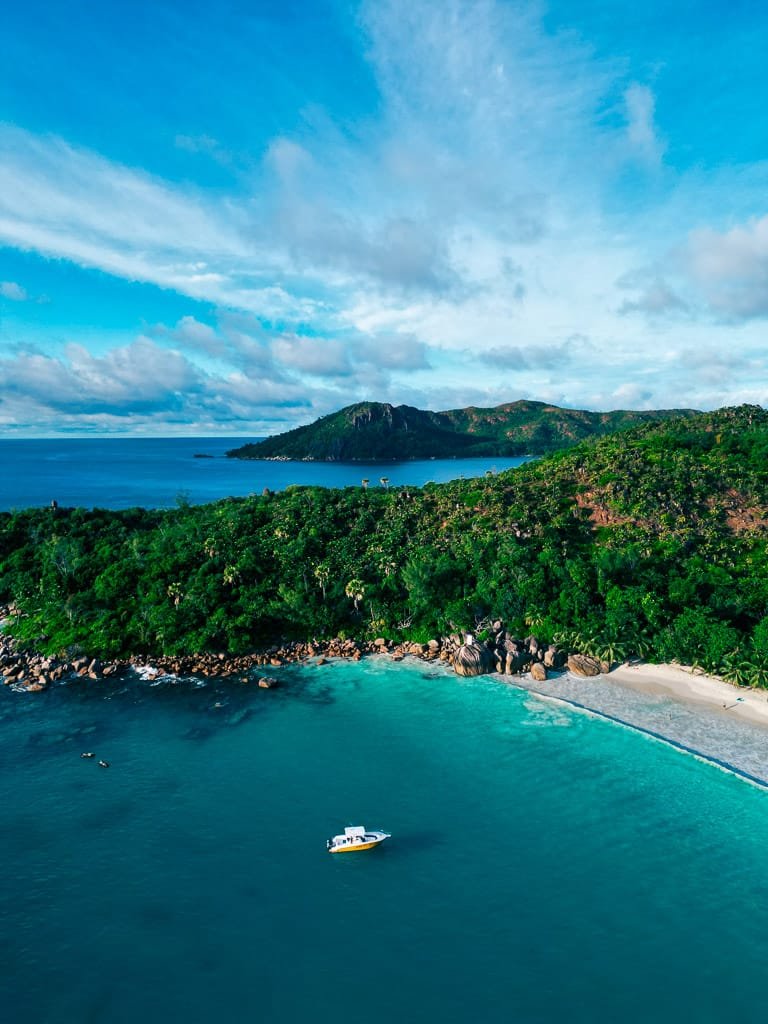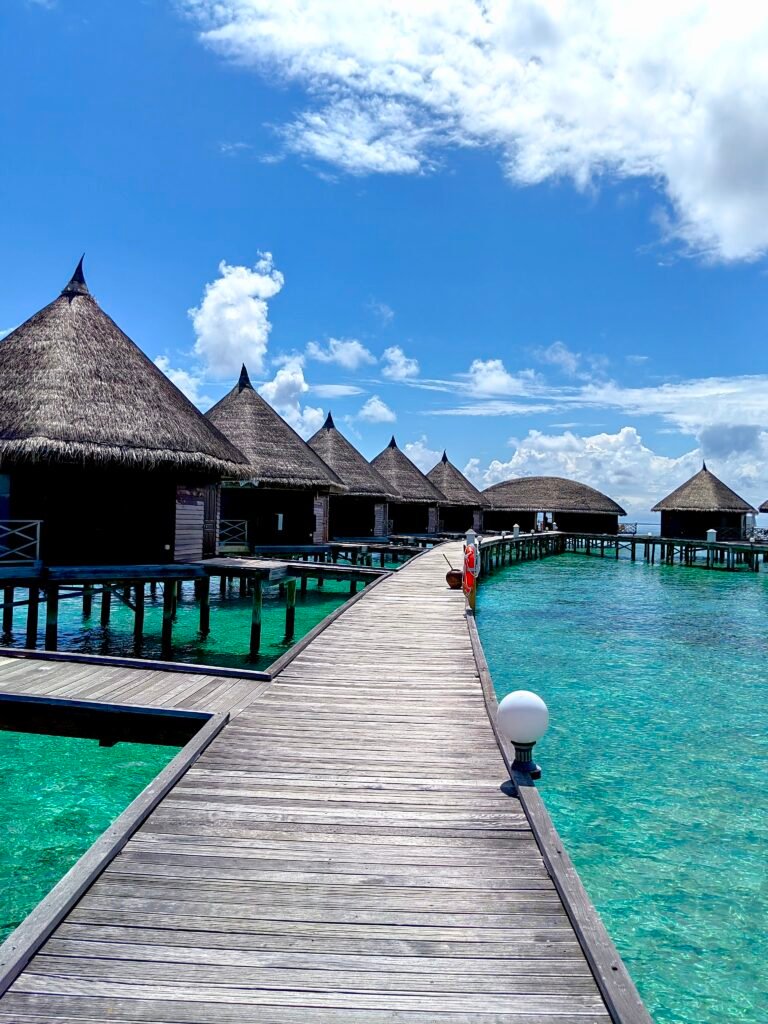[reading_time]
Travel to The Seychelles Part 1: Overview
Setting the Scene of the Seychelles
The Seychelles, often called the “Islands of Love,” is a stunning archipelago of 115 islands scattered across the Indian Ocean. Known for its untouched beaches, crystal-clear waters, and vibrant Creole culture, it’s no surprise this destination is a bucket-list favorite for travelers worldwide.
We traveled to the Seychelles in June 2024 and couldn’t wait to share our experiences in this four-part series about this magical destination. Among these islands, Mahe, Praslin, and La Digue are the most popular, each offering unique experiences. In Part One, we’ll give you an overview of what we think is essential to know while planning or researching your trip to the Seychelles.
let’s get into it!
Getting to the Seychelles From South Africa (Cape Town)
After a connecting flight through Johannesburg, we finally touched down on Mahe Island. The flight from Johannesburg to the Seychelles takes about 5 hours, while Cape Town travelers should account for 7.5 hours of flying, including a 2.5-hour connection to Johannesburg. These times don’t include layovers or ground transport, so plan accordingly. Mahe, the largest and most developed island, is the primary entry point for visitors.
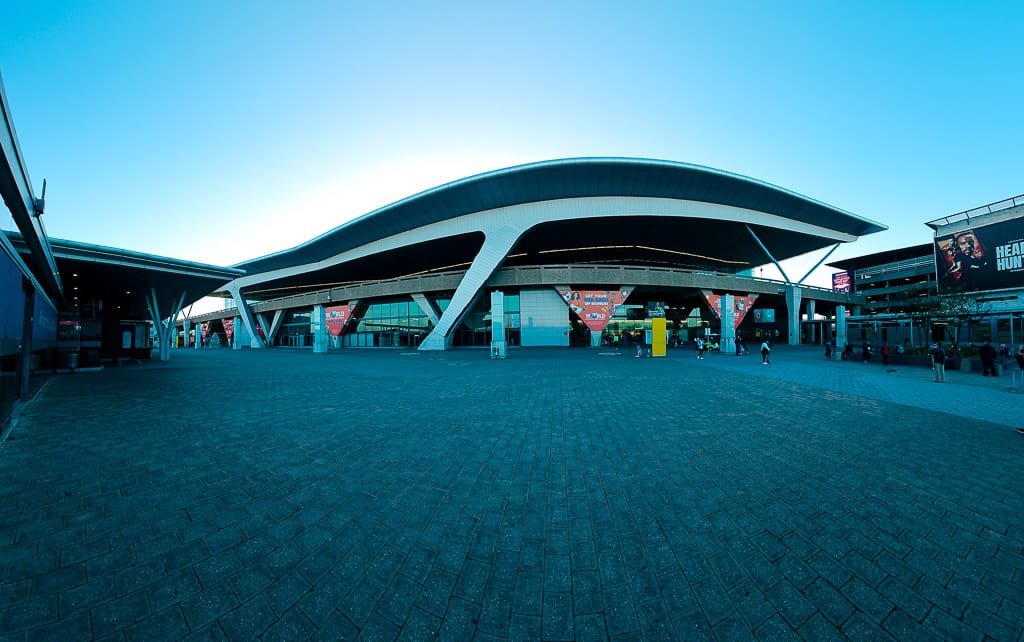
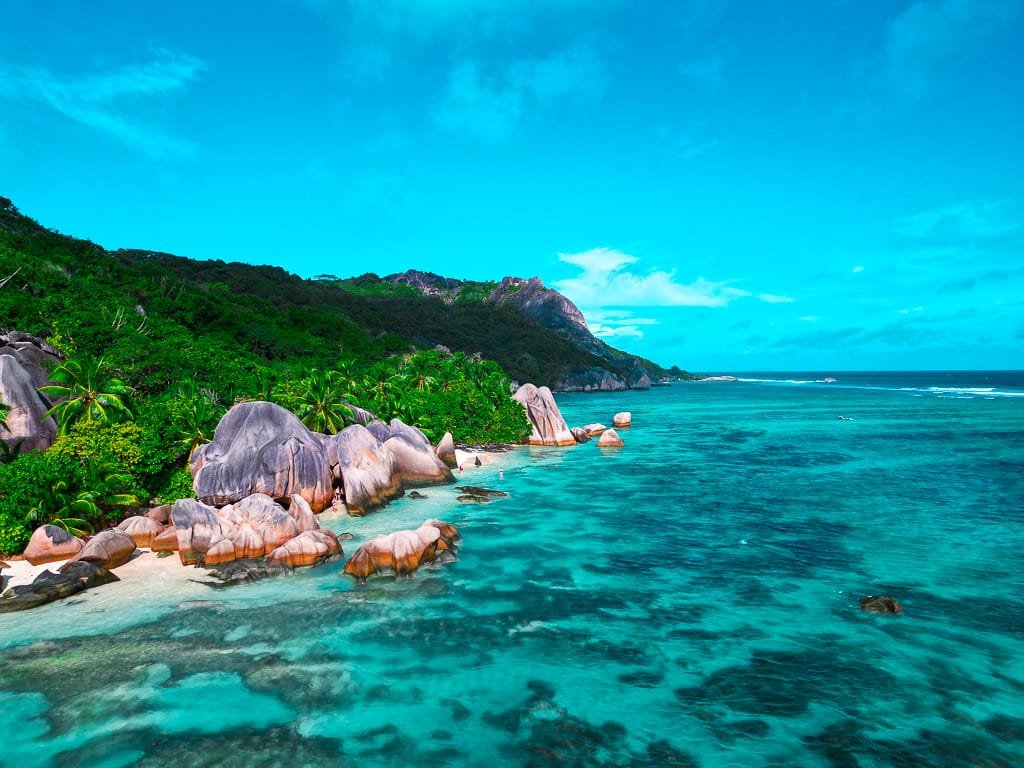
First Impressions (Unpolished perspectives)
Our initial moments in the Seychelles were a mix of awe and reality. The aerial views, often glorified on social media, truly are spectacular (even while editing the images for this series, we kept saying, “wowwwwww” at every image). On the ground, the scenery remains beautiful but sometimes falls short of the hype. Costs in the Seychelles are undeniably high, even during the off-season. Accommodations, dining, and transportation add up quickly. While the islands have a distinctive charm, we found the expenses hard to justify.
Our initial moments in the Seychelles were a mix of awe and reality. Sure, the aerial views were spectacular—every bit the Instagram dream. But once our feet hit the ground, the romance dulled slightly. Let’s be honest, Seychelles is gorgeous, but it doesn’t come cheap. Between overpriced transportation and restaurants that didn’t quite match the hefty bill, we often found ourselves questioning: “Is this worth it?”
We also encountered some surprises. The beaches we’d imagined as untouched paradises were mostly just for show and not really swimming-friendly beaches. And while we were keen to embrace the culture, the reality of balancing our idealistic expectations with the practical challenges left us grounded. It was beautiful, but not always the utopia we’d hoped for.
Still, what made it all worthwhile weren’t the picture-perfect postcard moments, but the raw, unscripted ones. It was flapping around in the ocean at the less popular beaches, where the water wasn’t as vividly blue but felt just as inviting. It was sitting on the sand, eating street food while watching the sunset, surrounded by locals and fellow travelers who were all seeking the same peace and appreciating the same simple beauty. These were the moments that grounded us and reminded us why travel is about more than just the glossy highlights you see on social media—it’s about connection, authenticity, and the shared joy of experiencing life’s little wonders.
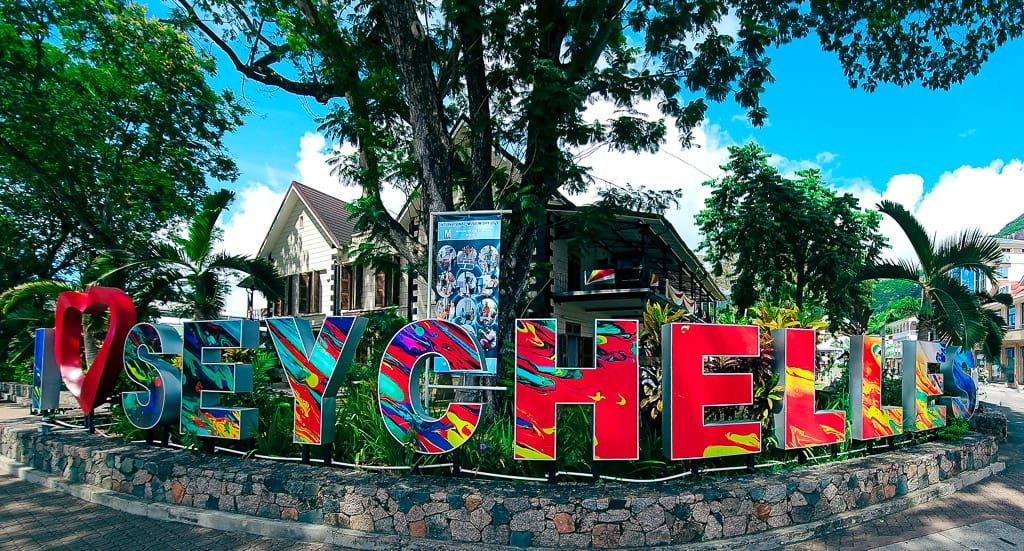
Culture
The Seychelles is a cultural mosaic, blending influences from African, European, and Asian traditions. English, French, and Creole are widely spoken, making communication easy for most travelers. The locals are warm and welcoming, with a deep pride in their heritage. During our trip, we were lucky enough to experience Seychelles National Day—2024 marked their 48th year of independence. It was incredible to see the country go all out for this special day. The streets were adorned with an abundance of Seychelles flag decorations, and parades brought vibrant energy to the celebrations. This firsthand experience gave us a window into the Seychellois love for their nation and their commitment to preserving their identity.
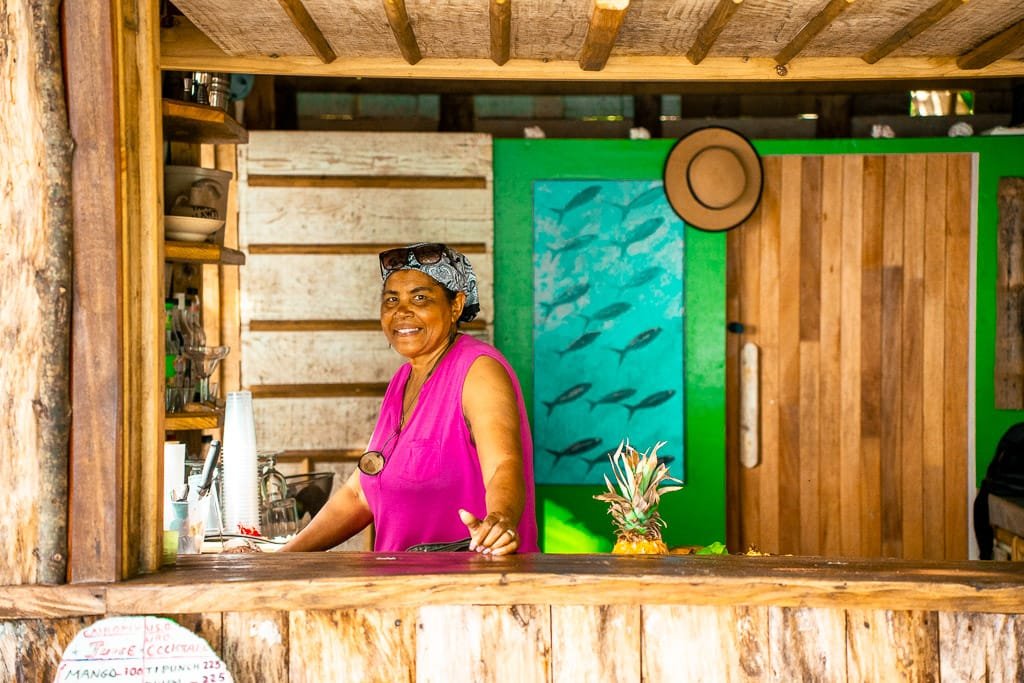
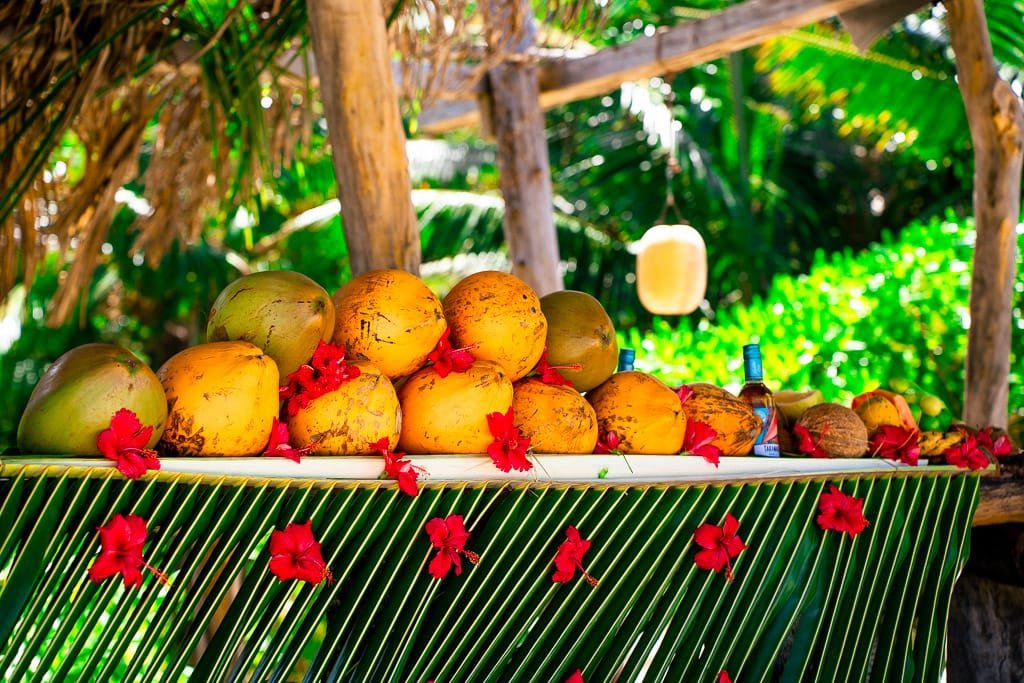
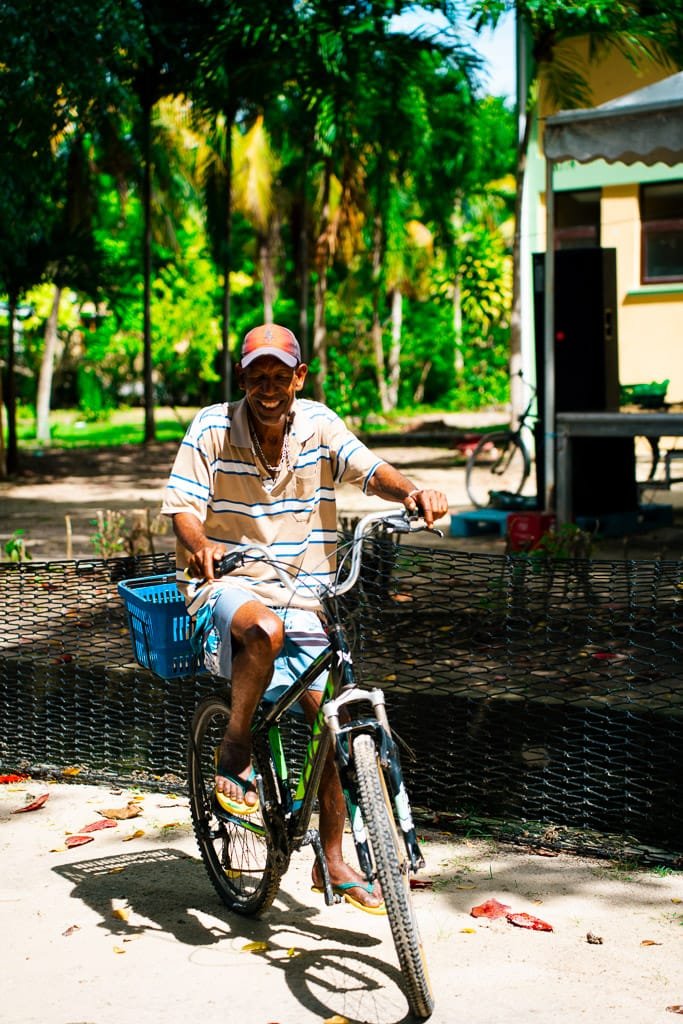
We also discovered how the Seychellois balance progress with tradition. A unique fact we learned from a guide is that the government restricts buildings to four stories, ensuring the islands retain their natural charm and iconic vistas. This policy reflects a broader cultural value of living in harmony with the environment—a philosophy that is evident in their unspoiled beaches and lush landscapes.
From the Creole cuisine to the warm smiles of the locals, every encounter reminded us of the rich tapestry of influences that make the Seychelles unique. If you have the opportunity, take time to engage with the people and learn their stories—it’s these interactions that truly bring the destination to life.
Currency
While the Seychellois Rupee is the official currency, we noticed that both USD and Euros are widely accepted across the Seychelles. This makes transactions more convenient for international travelers who may not want to exchange large amounts of local currency. However, having some Rupees on hand for smaller purchases, especially in local markets, can still be helpful.
Transportation
Getting around in the Seychelles can be a mixed bag. While the islands are breathtaking, transportation can be both costly and limited, making planning essential. Here’s what you need to know:
Taxis
Taxis are convenient but expensive. On our first day, we spent $200 just on taxis, which quickly proved unsustainable. Prices can be unpredictable, so always agree on a rate before starting your journey. Keep in mind that ride-hailing apps are not available, and fares can vary widely depending on the distance and driver.
Here are the numbers of two of the more affordable taxis we used to get around in Mahe for the first two days:
- Joe Cab: +248 251 2858
- Ben Cab: +248 251 5027
It’s always a good idea to book in advance and confirm rates to avoid surprises.
Public Buses
For budget-conscious travelers, public buses are available on Mahe. Fares appeared affordable when we asked about it, but we were also informed by the locals that services can be infrequent and routes might not always take you directly to tourist hotspots. It’s a great way to get a local experience but probably requires some more patience and flexibility.
Car Rentals
Renting a car is highly recommended for exploring Mahe and Praslin. It offers freedom, convenience, and significant cost savings compared to relying on taxis. Rentals cost between $50 and $70 per day, depending on the vehicle type and rental company. Driving is on the left side, and roads can be very narrow and very steep in some areas, so drive cautiously.
Ferry Services
The main mode of transport between islands is the ferry. Ferries connect Mahe, Praslin, and La Digue and operate regularly. However, seas can be rough, and travelers prone to motion sickness should prepare accordingly. For more details on ferry costs, read our practical tips section below for our personal experience and what we paid.
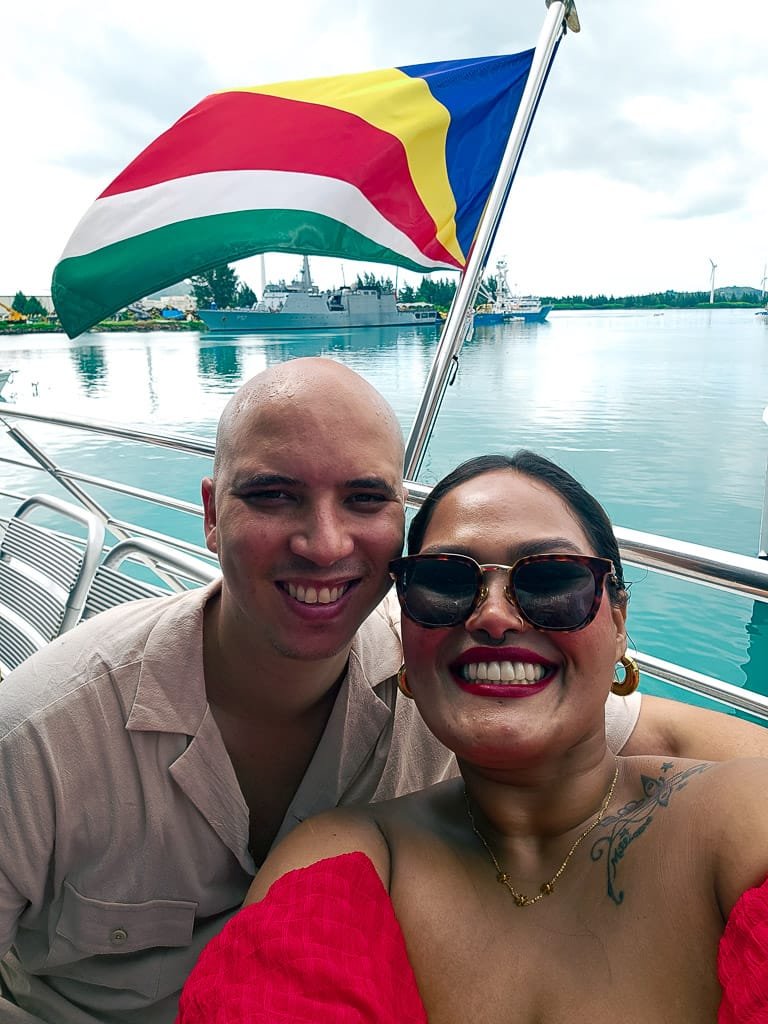
Flights Between Islands
Flights are an alternative for those traveling between Mahe and Praslin, with Air Seychelles operating daily services. Flights are faster and presumably more comfortable than ferries, but they come at a premium. While we opted for ferries to save costs, flights might be worth considering if your budget allows.
Getting Around on La Digue
Cars aren’t allowed on La Digue, adding to the island’s tranquil charm. Renting a bike is the only practical way to explore. Rates start at $10 per day, but you can save by renting for multiple days and negotiating with local vendors instead of hotels. The flat terrain and scenic routes make cycling an enjoyable way to discover the island.
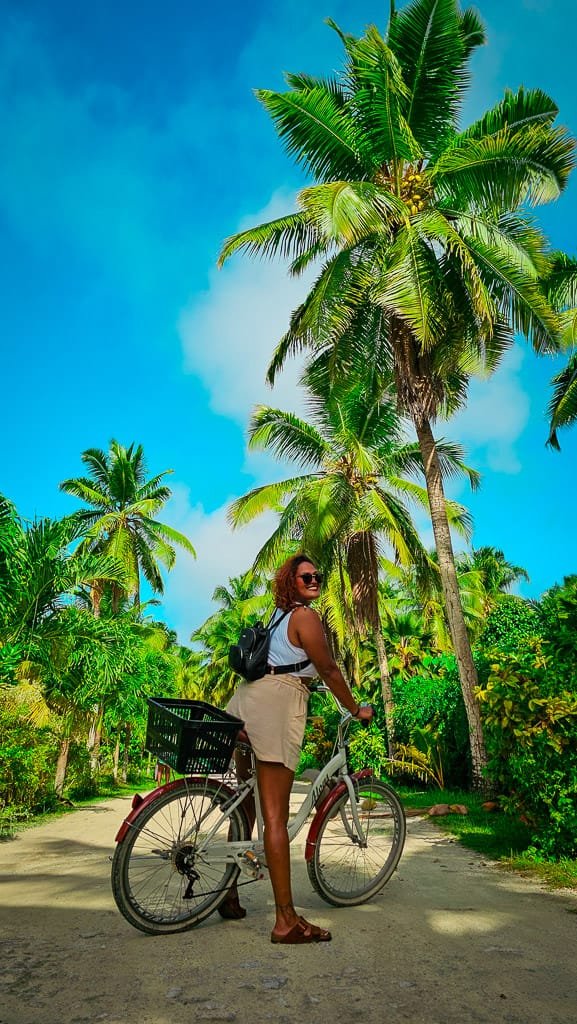
When to Visit
Timing your trip is essential. June and July bring clear skies and mild weather but are also known for their windy conditions. The rainy season, from November to January, includes brief showers that rarely disrupt plans. We visited in July and found the mornings to be warm and ideal for outdoor activities, as winds typically pick up later in the day. However, the weather wasn’t without its surprises—light showers and noticeable wind were regular occurrences.
On one of our ferry rides, the combination of rain and strong winds was so intense that it felt almost unbearable, a stark reminder of how unpredictable island weather can be. Despite these challenges, the overall conditions were pleasant and added a touch of adventure to our trip.
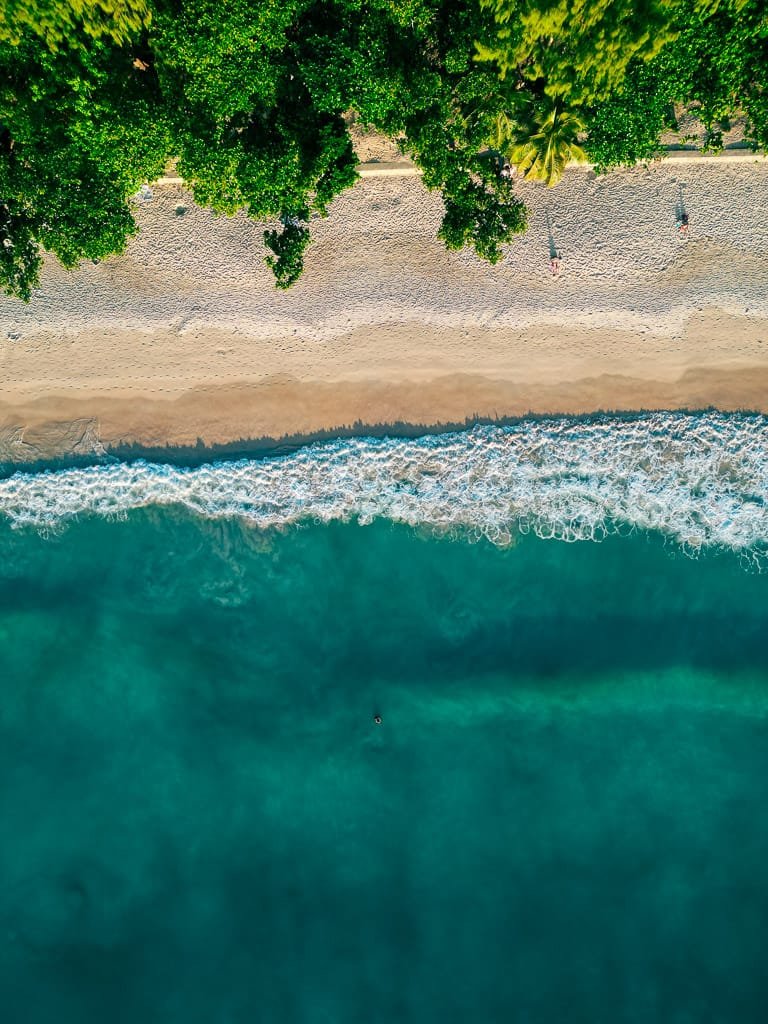
How Many Days is the Right Amount of Time in Seychelles?
The ideal number of days in the Seychelles will always differ for different people. Some travelers might prefer a quick getaway, while others may want a longer, more immersive experience. Our answer is based on our personal experience and the time we had available during our trip.
We spent a total of 8 nights and 9 days in the Seychelles, divided across three islands. Our itinerary included:
- 4 days in Mahe: Split into two 2-day increments—2 days at the beginning of the trip and 2 days at the end.
- 2 days in Praslin: Enough to see some highlights but left us wanting more time to explore.
- 3 days in La Digue: Enough time for relaxation and leisurely exploration.
Since this was part of a larger trip, we had to allocate our days wisely. However, if we had the chance to do it all over again, we’d recommend spending a minimum of 12 nights, split as follows:
- 4 days in Mahe: To fully experience its diverse attractions, from beaches to nature trails and cultural sites.
- 4 days in Praslin: Giving ample time to explore its famous beaches, like Anse Lazio, and enjoy its laid-back vibe.
- 4 days in La Digue: Allowing for a mix of cycling, exploring, and blissful beach days.
This longer stay would give you enough time to see each island’s main attractions, enjoy restful beach days, and even take day trips to nearby islands for a more complete Seychelles experience.
Ultimately, how much time you spend depends on your travel goals, pace, and interests, but we hope this breakdown helps guide your planning!
Saving Money in the Seychelles
We have highlighted how expensive it is to travel to the Seychelles (well at least for us as South Africans operating on Rands), and many will agree with this assessment. Some might argue that there are ways to explore the islands on a budget. While they might be correct to an extent, the reality is that the Seychelles is generally expensive. Everything—from food to transport and accommodations—comes with a hefty price tag, at least relative to what you get in return. In our view, the Seychelles didn’t make the cut for value for money. With that being said, here are some practical ways you can save money while traveling the Seychelles:
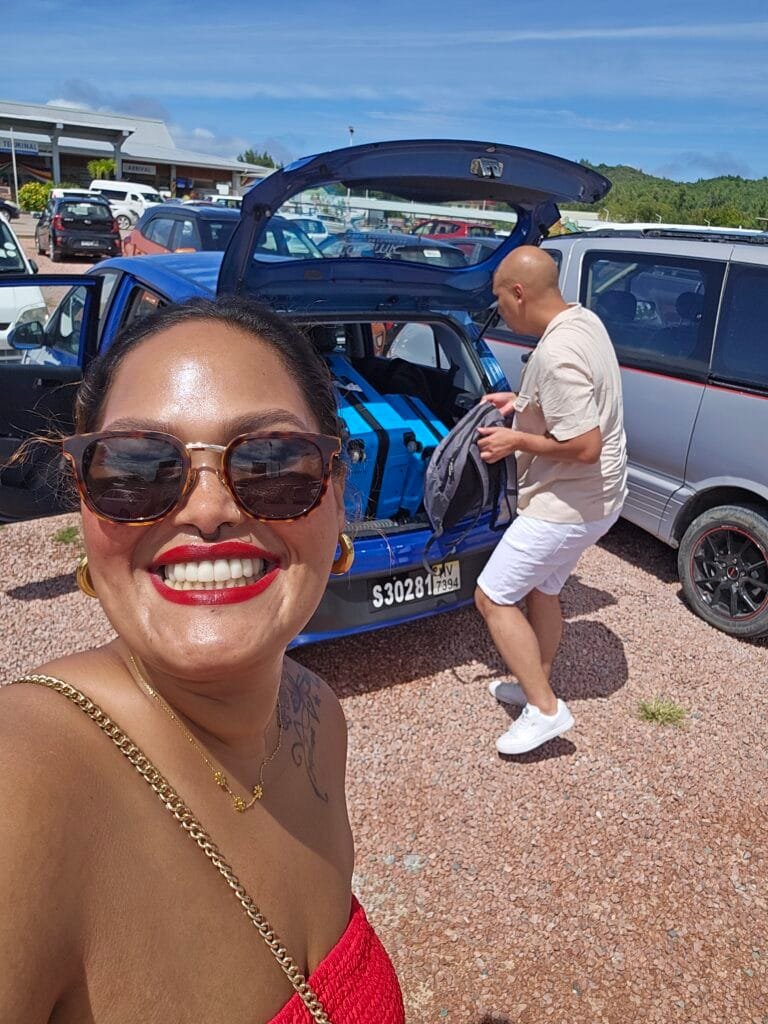
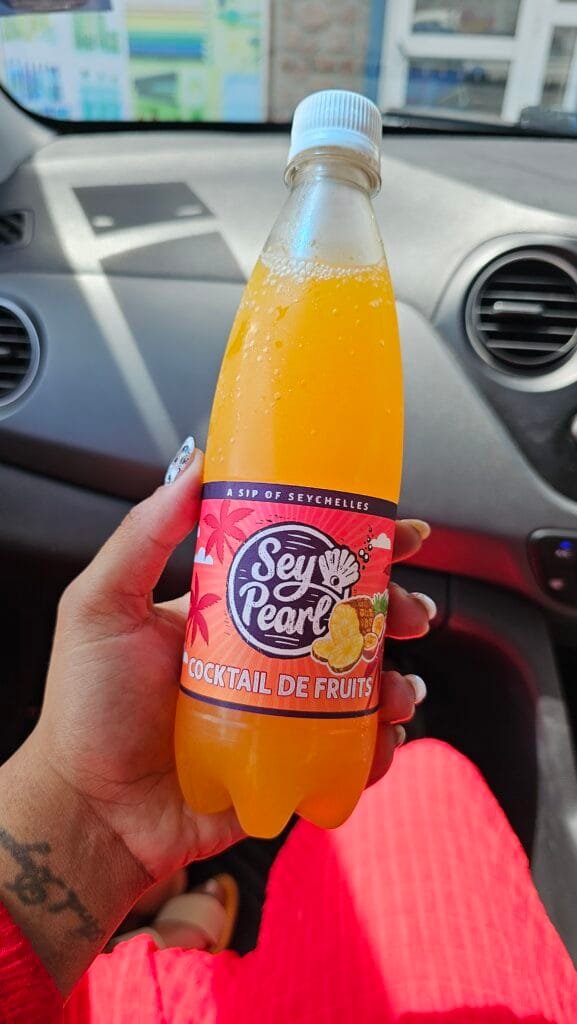
- Hire a car: Transportation costs can quickly add up. Renting a car gives you freedom and can save significant amounts compared to taxis.
- Consider your ferry options carefully: If you are prone to sea sickness, flying between islands may be worth the extra cost. The ferry is the more affordable option, but it was our least favorite part of the trip due to rough seas. Ferry costs we paid:
- Mahe to Praslin: €62/person
- Praslin to La Digue: €16/person
- La Digue to Mahe: €74/person
- One 23kg bag is included; additional luggage costs extra.
- Buy groceries locally: Snacks, water, and beverages are much cheaper when purchased at local grocery stores.
- Skip the guided tours: Enjoy the beaches and natural beauty independently rather than paying for expensive tours.
- On La Digue, rent a bike for multiple days: Cycling is the only way to get around. Renting for a few days is cheaper than renting by the hour. Avoid renting from hotels and instead negotiate with local vendors; we paid around $10 per day.
- Choose accommodations wisely: Be mindful of locations relative to amenities. For example, our stay at Blue Hill Hotel offered stunning views but was far from shops and restaurants, making transport costs higher.
- Opt for self-catering accommodations: Our favourite stay, Treasure Island on Praslin, allowed us to cook meals, which saved a lot on dining out.
- Pack essentials from home: Sunscreen, flip-flops, and hats are far more affordable to bring along than to buy on the islands.
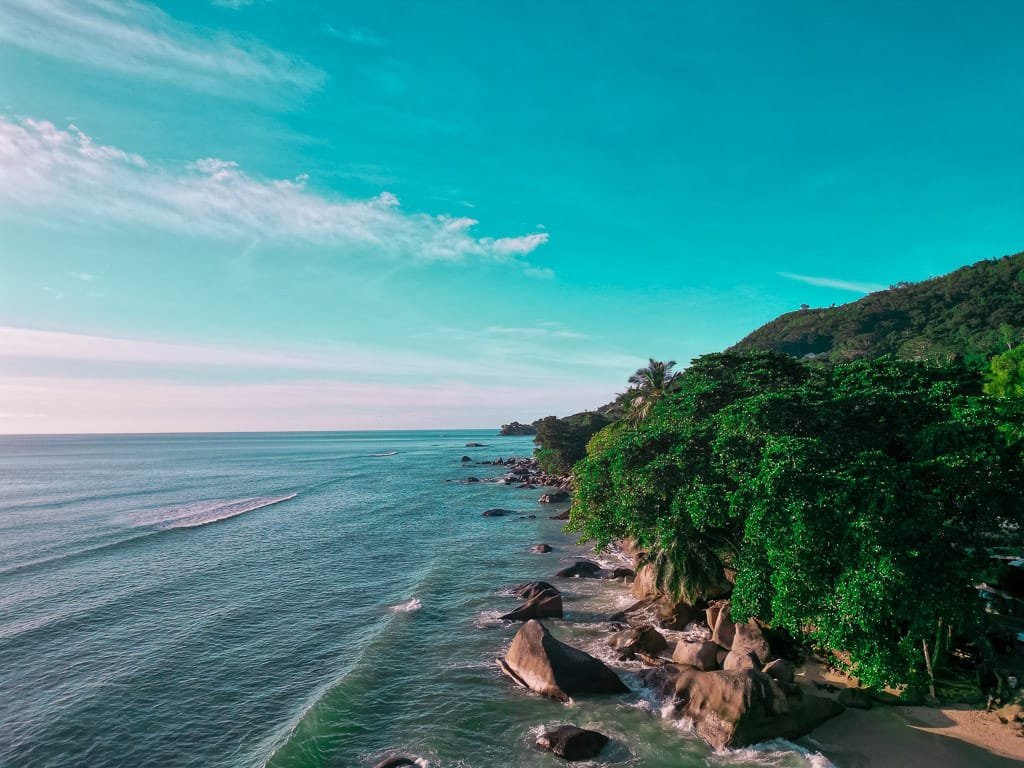
Final Thoughts
The Seychelles left us with mixed emotions—a destination of undeniable beauty, but also one that demands thoughtful planning to fully enjoy. Don’t get us wrong, we have incredible memories from our time there, and the islands’ turquoise waters, lush landscapes, and warm Creole culture are truly special. However, we’re tired of destinations being overly hyped on social media without merit. We believe in influencing influencer culture by sharing honest and balanced experiences, helping you plan trips that feel authentic and worthwhile.
For us, the Seychelles was both a once-in-a-lifetime and a once-off destination—a place of incredible beauty but not one we’d rush to revisit. We hope our insights help you prepare for your own adventure.
In Part 2, we’ll take you deeper into the heart of Mahe Island, sharing highlights, hidden gems, and lessons learned from exploring the gateway to the Seychelles. Follow our journey, and if you’re looking for more travel inspiration, tips and stories, be sure to subscribe to Roaming with the Kolbes and connect with us on Instagram.
Until our next post, keep #roamingwiththekolbes!
With love,


